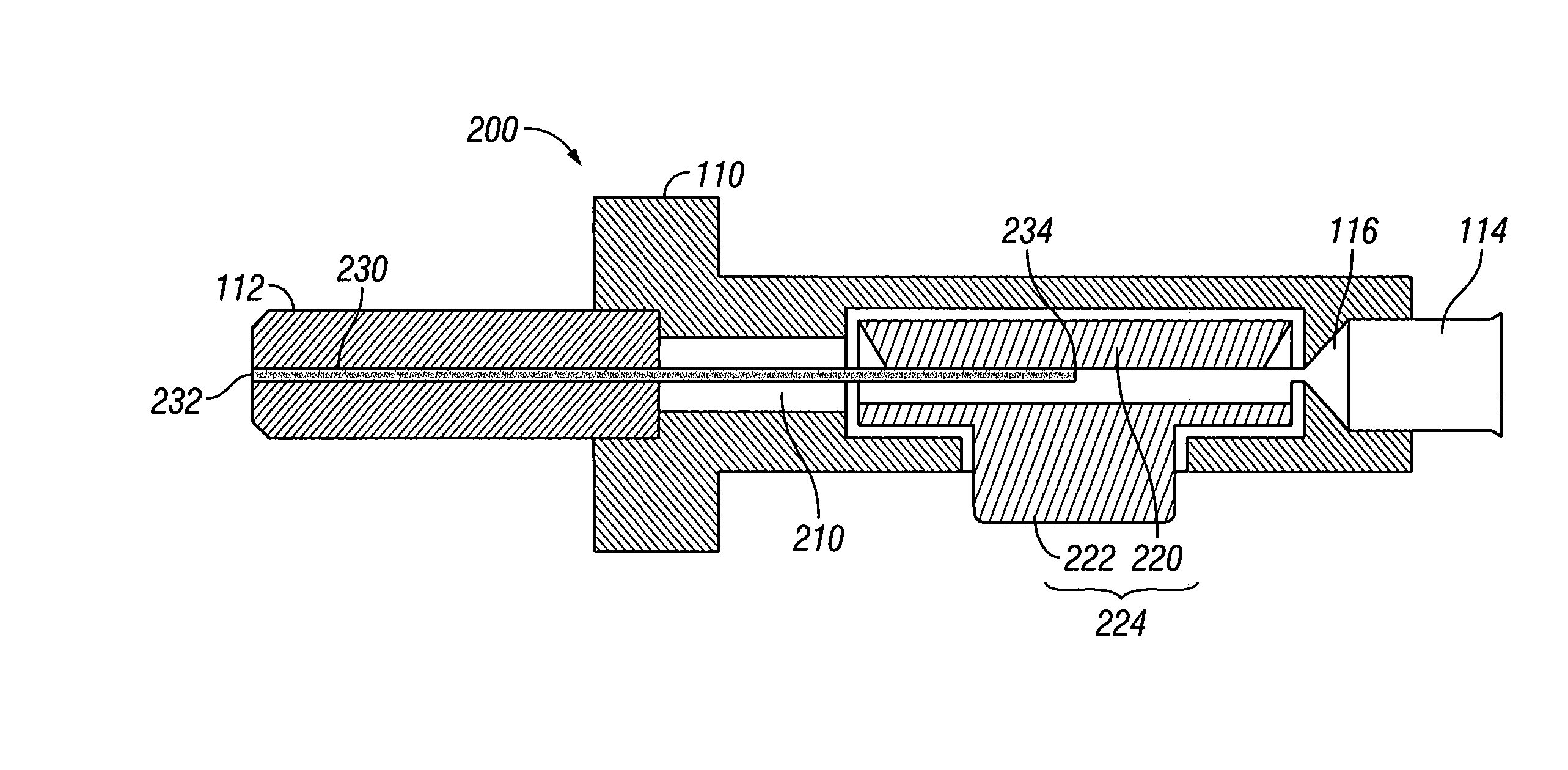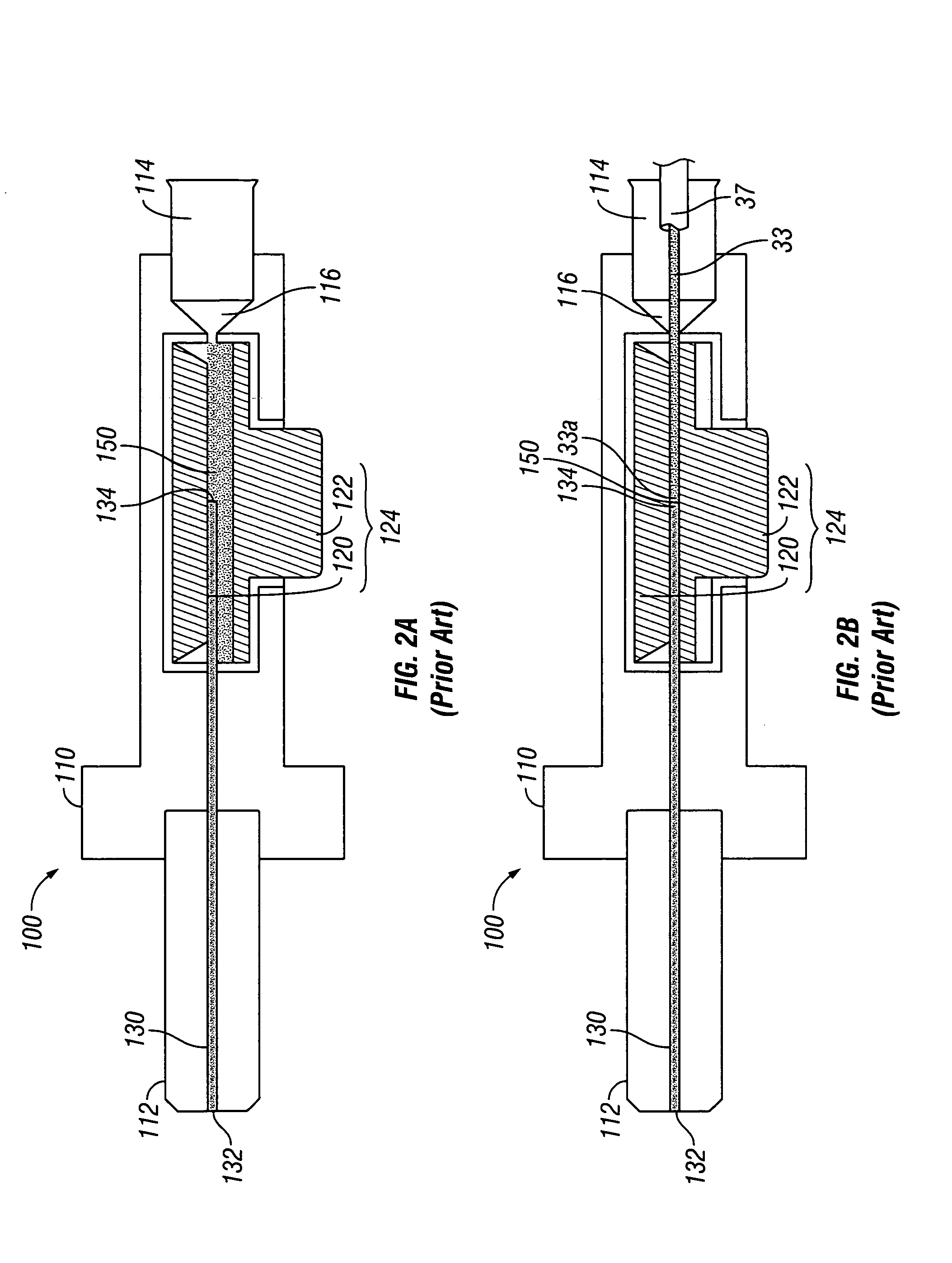Optical fiber mechanical splice connector
a technology of mechanical splicing and optical fiber, which is applied in the direction of optics, instruments, optical light guides, etc., can solve the problems of short changes in the length and bending characteristics of the fiber stub, and the proneness of long-term bending of the optical fiber, and achieve the effect of accurate alignment of the optical fiber and robust and reliable connectors
- Summary
- Abstract
- Description
- Claims
- Application Information
AI Technical Summary
Benefits of technology
Problems solved by technology
Method used
Image
Examples
Embodiment Construction
[0031] Although the figures and following description are intended to provide a full disclosure of the present invention, including the preferred embodiment, such that a person of ordinary skill in the art may practice the invention, the embodiments shown and discussed subsequently are not intended to limit the scope of the present invention. The inventor contemplates that minor modifications and variations are within the scope of the present invention.
[0032] Referring now to FIGS. 1A-1C, three cross-sectional views of three different optical fibers are depicted. Each type of optical fiber may be relevant in the present invention. The figures are not to scale between one another nor is the relative thickness of each layer accurately portrayed. FIG. 1A depicts a typical optical fiber 10. The optical fiber 10 is comprised of a core 12 and a cladding 14. The core 12 and the cladding 14 are generally comprised of silica for optimum performance of the optical fiber. The cladding 14 feat...
PUM
 Login to View More
Login to View More Abstract
Description
Claims
Application Information
 Login to View More
Login to View More - R&D
- Intellectual Property
- Life Sciences
- Materials
- Tech Scout
- Unparalleled Data Quality
- Higher Quality Content
- 60% Fewer Hallucinations
Browse by: Latest US Patents, China's latest patents, Technical Efficacy Thesaurus, Application Domain, Technology Topic, Popular Technical Reports.
© 2025 PatSnap. All rights reserved.Legal|Privacy policy|Modern Slavery Act Transparency Statement|Sitemap|About US| Contact US: help@patsnap.com



